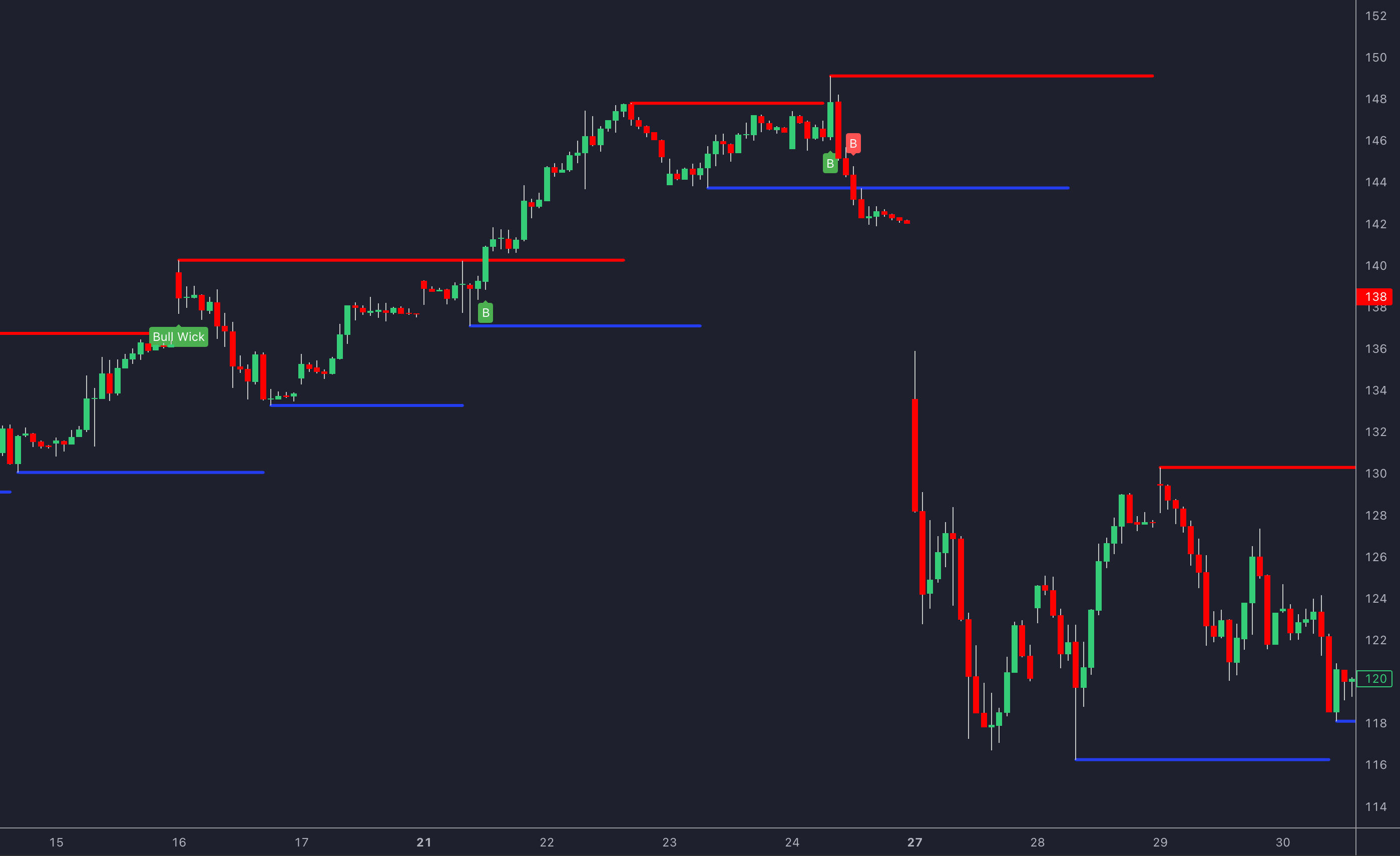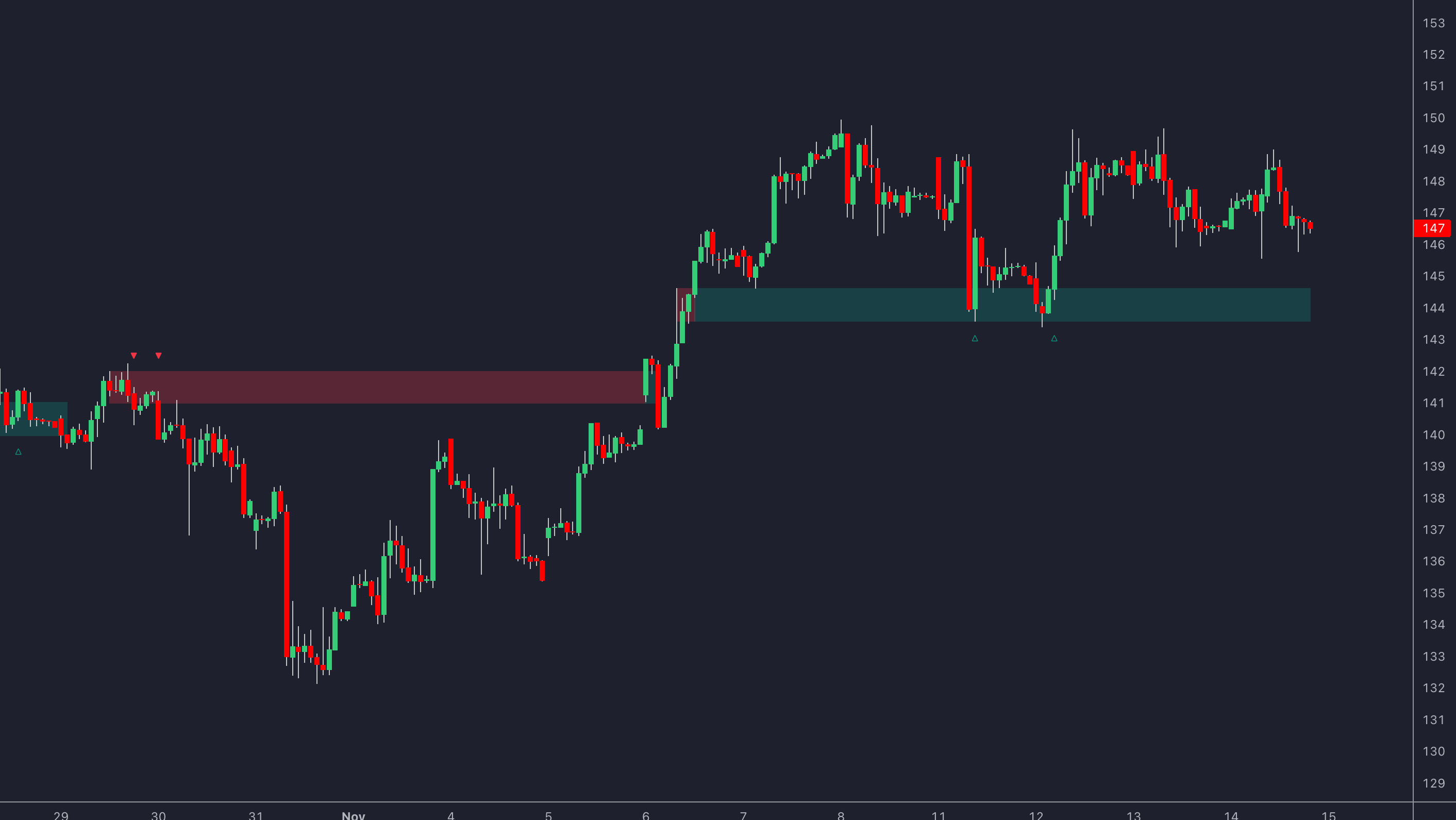Learn to identify and profit from false breakouts with five effective trading strategies that leverage market psychology and technical analysis.
False breakouts can trick traders into losses, but they can also be turned into profitable opportunities. This article covers 5 proven strategies to spot and trade false breakouts effectively:
- Momentum Reversal: Identify failed breakouts with weak follow-through and reversal patterns.
- Price Trends: Use trend analysis to detect false moves against the dominant trend.
- News Events: Spot false breakouts during volatile news releases by waiting for confirmation.
- Multi-Timeframe Analysis: Cross-check signals across different timeframes for consistency.
- Options Data: Leverage options sentiment to confirm or question breakout validity.
Quick Comparison
| Strategy | Key Focus | Validation Tools | Best For |
|---|---|---|---|
| Momentum Reversal | Failed breakouts & reversals | Volume, RSI, candlestick patterns | Reversal traders |
| Price Trends | Trend structure & direction | Trendlines, moving averages | Trend-following traders |
| News Events | Volatility around news | LuxAlgo signals, time-based filters | Event-driven traders |
| Multi-Timeframe Analysis | Signal alignment across timeframes | Volume, trend structure, divergences | Precision trading setups |
| Options Data | Institutional sentiment | Put-call ratio, implied volatility | Advanced confirmation setups |
False breakout trading requires discipline, confirmation tools, and proper risk management. Learn how to combine these strategies for better results.
How to trade Fakeouts (avoid the trap)
What Are False Breakouts?
False breakouts happen when the price moves past a support or resistance level but then quickly reverses, catching traders off guard who acted on what looked like a breakout[1]. These events are often driven by market psychology and institutional strategies, such as stop-loss hunting[2][3].
Understanding this behavior is key before diving into the five detection strategies outlined later. Retail traders driven by FOMO often create the initial price push, only for institutions to reverse the price direction, triggering stop-loss orders and causing sharp price swings[4]. This is especially common in range-bound markets, where extra vigilance is required[2].
The reliability of breakout signals depends heavily on market conditions[2]. To analyze them effectively, focus on:
- Price movements beyond support or resistance levels
- Volume trends during the breakout attempt
- Price action immediately after the breakout
Indicators like LuxAlgo's Price Action Concepts can simplify this process. By using features like divergence detection and volumetric analysis, these indicators help traders separate real breakouts from false ones. Automated pattern recognition further enhances accuracy while saving time.
These fundamentals provide the groundwork for the detection strategies discussed next.
1. Momentum Reversal at Failed Breakouts
Setup Criteria
Momentum reversal trading focuses on spotting failed breakouts that hint at a potential price reversal. This happens when the price breaks through a support or resistance level but struggles to sustain its movement. Here's what to watch for:
- Repeated tests of a key level followed by a weak breakout
- A noticeable drop in volume after the breakout
- Reversal candlestick patterns such as engulfing formations or pin bars
- The price moving back to the original breakout level
Validation Tools
To confirm a momentum reversal, rely on these technical tools:
| Tool Type | Purpose | Key Indicators |
|---|---|---|
| Volume Analysis | Check the breakout's strength | A spike in volume followed by a drop |
| Momentum Indicators | Spot divergences | RSI, Stochastic Oscillator |
| Price Action | Confirm reversal signals | Candlestick patterns, market structure |
The LuxAlgo PAC toolkit can further refine your analysis by automatically detecting potential reversal zones, making it easier to pinpoint high-probability setups.
Risk Management
Proper risk controls are essential. Use a stop-loss placed just beyond the breakout extreme, aim for a 2:1 reward-to-risk ratio, and consider taking partial profits at key levels.
Execution Tips
To execute this strategy effectively, keep these tips in mind:
- Wait for a confirmed close beyond the breakout level before taking action
- Look for confirmation across multiple timeframes
- Use limit orders at key levels to secure better entry points
This momentum-based strategy pairs well with trend analysis for added precision. For instance, the EUR/USD's May 2023 reversal from 1.0875 to 1.0700, after failing to break the 1.0800 resistance, showcases how effective this approach can be [1][3][5].
To boost your success:
- Keep an eye on related assets for additional confirmation
- Leverage divergence tools for stronger signals
2. Using Price Trends to Spot False Breaks
Trend analysis builds on momentum-based detection by offering a structural view of the market. This method helps identify false breakouts, especially in situations where market conditions play a crucial role, as mentioned earlier.
Setup Criteria
These setups take advantage of the stop-loss hunting behavior often seen among institutional players. The main focus is on how price interacts with the current trend. False breakouts are most likely to occur when trading against the dominant trend direction[1].
| Trend Type | Key Indicators | Warning Signs |
|---|---|---|
| Uptrend | Higher highs, higher lows | Break below support with low volume |
| Downtrend | Lower lows, lower highs | Break above resistance with weak momentum |
| Range | Horizontal support/resistance | Breaks without volume confirmation or strong close |
Validation Tools
To confirm trends effectively, use multiple signals:
- Trend confirmation tools like trendlines and moving averages.
- LuxAlgo PAC for automated structure analysis.
- Momentum-volume divergence detection to spot inconsistencies.
Risk Management
A clear example of why risk management matters is TSLA's false breakout in August 2022. After breaking above $300 resistance, the stock reversed sharply, dropping to $220 within two months. This highlights the importance of setting stop-losses beyond breakout extremes.
Key Execution Principles
- Wait for Confirmation: Look for strong price action that clearly rejects the breakout level.
- Analyze Volume: Low volume during a breakout attempt often hints at a false move[4].
- Check Multiple Timeframes: Align rejection signals across higher timeframes (explored further in Strategy 4).
This trend-driven strategy sets the stage for Strategy 3, which delves into news-driven false breakouts and the importance of trend context in such scenarios.
3. Trading False Breaks During News Events
News events often lead to false breakout opportunities due to predictable market responses. These scenarios test the trend setups covered in Strategy 2, but require extra confirmation tools to improve accuracy.
Setup Criteria
| News Type | Key Filters |
|---|---|
| Scheduled Events | Consolidation near important price levels |
| Earnings Releases | High implied volatility |
| Economic Data | Thin order books |
Validation Tools
- Use LuxAlgo's Signals & Overlays: Identify institutional order clusters for better precision.
- Time-Based Validation: Wait 15-30 minutes after major news announcements. The initial minutes often show chaotic price moves that can mislead traders.
Risk Management
"During the June 2022 FOMC meeting, the S&P 500 initially broke out to new lows after the rate decision, only to reverse and close higher, trapping many short sellers" [2][3].
To avoid falling into similar traps:
- Cut position sizes to 50% of your usual trading size.
- Set time-based exits if the trade doesn’t show movement within 5 minutes.
Execution Tips
Building on the trend rejection principles from earlier, refine your approach with these techniques:
During Nvidia's August 2023 earnings, a 5% after-hours breakout reversed at market open, rewarding traders who waited for confirmation.
- Place limit orders near key levels before the news release.
- Use OCO (One-Cancels-Other) orders to manage both entry and exit efficiently.
- Scale in positions gradually to reduce risk.
This strategy integrates event-specific dynamics with trend analysis, paving the way for our next topic: multi-timeframe confirmation in Strategy 4.
4. Multiple Timeframe Analysis Method
Multiple timeframe analysis involves examining price action across different time periods to spot false breakouts. This approach helps traders avoid being misled by short-term price movements by verifying breakout signals across multiple timeframes[1][4].
Setup Criteria
| Timeframe Level | Purpose | Example |
|---|---|---|
| Higher | Determine overall trend | Daily chart |
| Intermediate | Make trading decisions | 4-hour chart |
| Lower | Pinpoint entry points | 15-minute chart |
It's important to keep consistent spacing between timeframes. For instance, a day trader might use daily charts to identify the trend, 1-hour charts for trade planning, and 15-minute charts to fine-tune their entry points[2][3].
Validation Tools
You can improve your analysis by using LuxAlgo's Price Action Concepts (PAC) toolkit, which automates pattern detection. Key elements to validate include:
- Volume Confirmation: Ensure price movements align with volume across timeframes.
- Trend Structure: Check for inconsistencies with the higher timeframe's trend.
- Momentum Analysis: Look for divergences between timeframes.
Risk Management
Keep these rules in mind:
- Monitor related markets to confirm signals.
- Adjust position sizes based on how well timeframes align.
"The higher timeframe should always carry more weight in decision-making"[4].
Execution Tips
To apply this method effectively:
- Wait for price rejection signals across at least two timeframes, ensuring they align with the higher timeframe trend.
- Use lower timeframes strictly for refining entry points.
- Check related markets for additional confirmation.
This method gives traders a clear framework to differentiate real breakouts from short-lived price moves. It also sets the stage for Strategy 5, which focuses on using options data for further validation.
5. Using Options Data to Confirm False Breaks
Options data can provide valuable insights into institutional sentiment, adding an extra layer to confirm or question breakout attempts. It complements multi-timeframe analysis by offering a deeper look into market dynamics.
Setup Criteria
Here’s a quick guide to key indicators and their signals:
| Indicator | Signal Type | Alert When |
|---|---|---|
| Put-Call Ratio | Sentiment | Ratio exceeds 1.0 during upward breaks |
| Implied Volatility | Conviction | Lower than historical volatility |
| Open Interest | Participation | No significant increase during break |
| Options Volume | Activity | Below average daily trading volume |
Validation Tools
To validate potential false breaks, tools like the CBOE Volatility Index (VIX) and options flow data are essential. Platforms such as LuxAlgo's Signals & Overlays (S&O) toolkit can help visualize these patterns alongside price action, making it easier to identify questionable breakouts.
Important metrics to watch include:
- Volume clustering at specific strike prices
- Implied Volatility Skew, which may indicate market uncertainty
- Unusual block trades, often pointing to institutional activity
Risk Management
Use options data to fine-tune your position sizing and risk management:
- Adjust exposure when implied volatility signals uncertainty.
- Consider options strategies like spreads to hedge your positions.
- Set stop-loss levels based on support and resistance derived from options data.
Execution Tips
To improve execution:
- Focus on breakouts with at least a 20% increase in open interest - these tend to be 70% more reliable[3].
- Look for divergences between price action and options sentiment.
- Cross-check options signals with traditional price action patterns.
This approach works best when combined with technical analysis, leveraging options data to confirm or challenge price action signals.
Breakout vs False Breakout Trading Methods
Building on options data analysis from Strategy 5, traders need to understand the key differences between traditional breakout techniques and false breakout opportunities.
The main distinction lies in when you enter the trade:
| Aspect | Breakout Strategy | False Breakout Strategy |
|---|---|---|
| Entry Timing | After a confirmed breakout | After a failed breakout and reversal |
| Direction | With the breakout's momentum | Opposite the initial breakout direction |
Market Conditions and Strategy Performance
The effectiveness of each strategy depends heavily on market conditions. Recent trading data reveals that false breakout strategies have a success rate of 62%, compared to 54% for traditional breakout methods [3]. Here's how these strategies stack up in different environments:
Trending Markets:
- Breakout strategies thrive when there's clear momentum in one direction.
- False breakout methods are less reliable and require more caution.
Ranging Markets:
- False breakout strategies tend to shine in these conditions.
- Traditional breakout trades are more prone to failure.
Risk vs Reward
The risk-reward dynamics differ noticeably between the two approaches. False breakout trades often offer a more attractive ratio of 1:2.5, compared to 1:1.8 for traditional breakout trades [3]. These figures align with earlier detection strategies, particularly when combining volume analysis (Strategy 1) and multi-timeframe confirmation (Strategy 4).
Advanced Techniques for Success
Experienced traders often combine both methods by focusing on:
- Accurately identifying the current market environment.
- Employing strong risk management practices.
- Adapting trade management strategies as conditions evolve.
- Using multiple timeframes to confirm trade setups.
This comparison lays the groundwork for executing false breakout trades effectively with the step-by-step guide provided later.
Technical Tools for Better Pattern Detection
Putting the five strategies into action requires a solid technical setup. The right tools can sharpen your ability to spot false breakouts by offering key functionalities.
Advanced Pattern Detection Systems
Modern systems make it easier to execute strategies by focusing on these areas:
- Automated Pattern Recognition: Scans multiple timeframes to identify false breakout setups, helping you avoid missed opportunities.
- Volume-Cluster Analysis: Analyzes trading activity to pinpoint support and resistance levels.
- Market Structure Analysis: Highlights pivot points and likely reversal zones where false breakouts often occur.
A good example is LuxAlgo, which combines these features to flag potential reversals for Strategy 1 while testing setups against historical data [4].
Backtesting and Optimization
The value of detection tools increases significantly when paired with systematic testing. Backtesting allows traders to:
- Test false breakout strategies across various timeframes.
- Fine-tune entry and exit points.
- Measure performance in different market environments.
This process helps traders refine their methods while staying aligned with technical analysis principles. When paired with reliable detection tools, backtesting ensures setups are thoroughly validated, leading to better execution of the strategies discussed earlier.
How to Trade False Breakouts: Step-by-Step Guide
Here’s how to put the earlier detection strategies and tools into action with a clear execution plan:
Pre-Trade Preparation
Set up your charts with the key indicators from Strategies 1 through 5. Use the pattern detection tools mentioned earlier to spot potential setups across different timeframes.
Entry Strategy Development
Blend elements from all five strategies to confirm a trade setup. Look for:
- Low breakout volume
- Reversal candlestick patterns
- Momentum divergences (as explained in Strategy 1)
Position Management Framework
Stop Loss Placement
Follow the stop-loss rules outlined in Strategy 1 to limit potential losses.
Profit Target Selection
Set profit targets based on the market structure and important technical levels.
Risk Management Guidelines
Adjust your position size according to the market conditions discussed in Strategy 5. Use trailing stops to secure profits and consider options strategies to cap risk during volatile market periods[6].
Trade Monitoring Process
Keep a close eye on your trades with these steps:
-
Volume Confirmation
Watch real-time volume trends. A successful false breakout trade should show rising volume as the price moves in your favor[3]. -
Position Adjustment
Modify your stop-loss dynamically based on the latest price action.
This approach integrates the multi-timeframe confirmation techniques from Strategy 4.
Trade Review Process
Regularly review your trades and track performance metrics. This helps refine your strategy and minimizes emotional decision-making.
Conclusion
False breakout trading can be a way to capitalize on market traps, but it requires discipline and a solid strategy. The five approaches outlined show how blending technical analysis with proper risk management can create a reliable system.
For instance, LuxAlgo's PAC toolkit (Strategy 1) helps identify patterns more effectively, while the AI Backtesting Assistant ensures multi-timeframe setups are sound. Combining these advanced tools with time-tested methods improves both trade execution and analysis.
Practical Tips for Getting Started:
- Begin with paper trading to sharpen your pattern recognition skills.
- Focus on setups that offer clear confirmation signals.
- Stick to strict risk management rules.
Risk Management Basics: Use consistent position sizing and well-placed stop-loss levels to protect your capital and build a foundation for long-term success [1][4].
Consistency is Key: To excel in false breakout trading, make it a habit to:
- Analyze historical price movements through backtesting.
- Keep detailed records of your trades and review the outcomes.
- Adjust your entry and exit strategies based on what you learn.
FAQs
How can you spot fake breakouts in trading?
To spot fake breakouts, combine technical indicators with volume analysis. Look for:
- Momentum divergence using tools like RSI or Stochastic at extreme levels.
- Weak volume during the breakout attempt.
- Clear rejection patterns at key support or resistance levels.
What’s a good way to filter out false breakouts?
You can filter false breakouts by following these steps:
- Look for consecutive closes beyond the breakout level.
- Check if the breakout happens with above-average volume.
- Confirm the breakout on higher timeframes for consistency.
These steps align with principles of momentum and volume divergence.
How do you trade false breakouts effectively?
Trading false breakouts involves a structured approach:
- Enter the trade only after a confirmed reversal.
- Place your stop-loss just beyond the breakout extreme.
- Aim for targets within the previous range levels.
This method works well with multi-timeframe confirmation strategies.
Free LuxAlgo Indicators for Breakouts & Retests
LuxAlgo offers free indicators available in the LuxAlgo Library that automatically detect breakouts and retest scenarios. With a free account, traders can access these robust indicators to enhance their technical analysis without any additional cost.
The first indicator, Swing Breakouts Tests & Retests, dynamically plots breakout and retest zones on your chart. It leverages pivot analysis and ATR-based calculations to display both bullish and bearish signals with color-coded boxes and directional labels. This visual aid helps you quickly identify potential reversal points and trade setups.

The second indicator, Breakouts with Tests & Retests, highlights key support and resistance levels using pivot points combined with volume analysis. It not only marks breakout points but also signals retest scenarios, adding an extra layer of confirmation. The built-in volume filter ensures that only significant breakouts are flagged, which is especially useful during volatile market conditions.

By integrating these free indicators into your trading strategy, you can better identify and act on potential breakout opportunities. They serve as a powerful complement to traditional technical analysis, making them an excellent resource for both novice and experienced traders.







